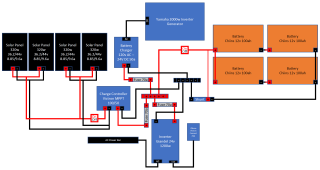I am brand new to solar and brand new to this site. I am trying to design a system that will support starlink, my laptop, a second monitor, a couple of lights and be able to charge my phone and flashlight. I drew this today. Looking for any input anyone is willing to offer. Shack is in Ontario, Canada and I will be there for the months of September and October this fall.





